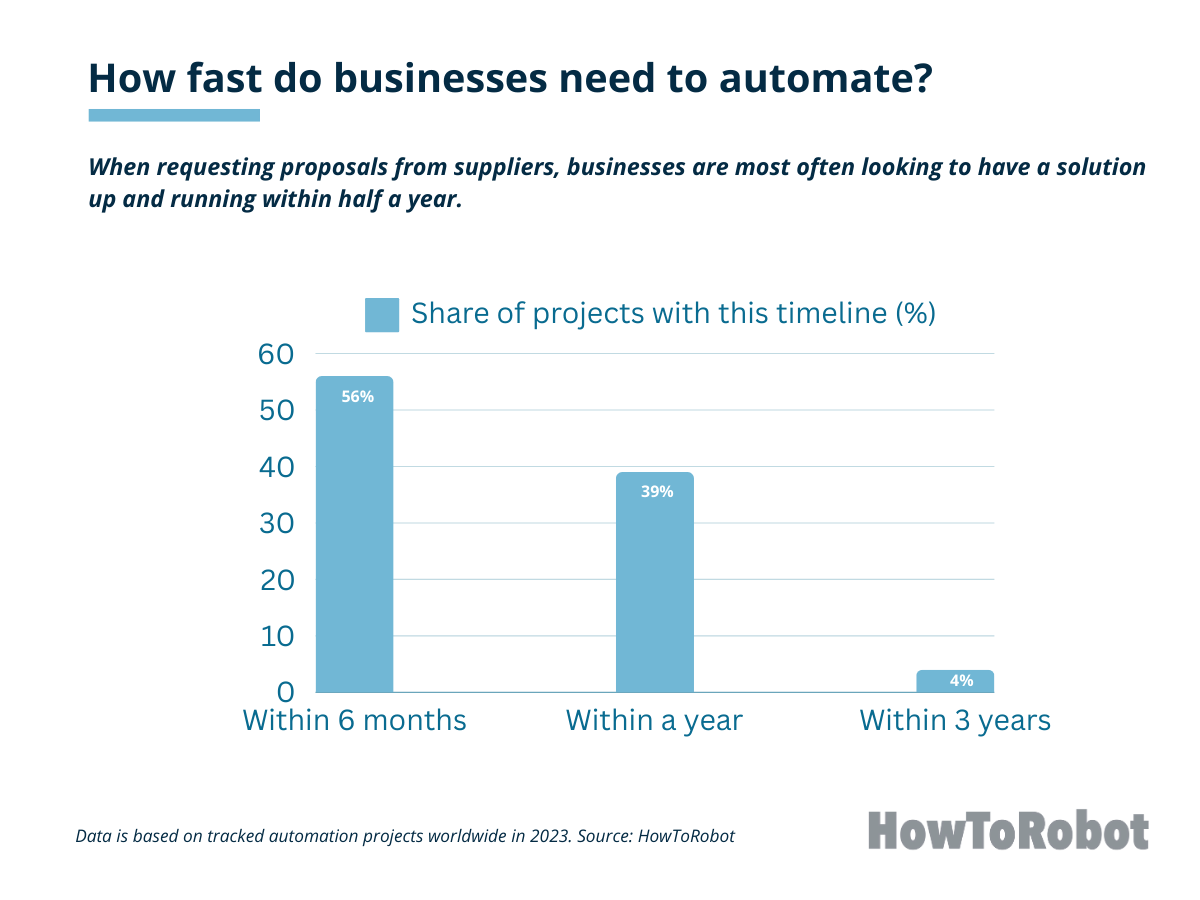April 20-24, Birmingham
Robotics & Market Insights
Automation is an urgent priority among businesses
The need for automation and robotics is not just expected to increase this year – it’s also becoming an urgent priority for many businesses.
Among the businesses seeking to automate, a large majority are looking to do so at a relatively short notice of less than six months, new data from HowToRobot shows.
Across automation projects worldwide in 2023, tracked by HowToRobot, 56% had a timeline of less than six months to find a supplier and get a solution up and running.
The finding shows the urgency that automation has for many businesses according to HowToRobot CEO, Søren Peters:
“It’s becoming clear that automation and robotics are often planned in the short-term in response to immediate challenges such as labor shortages,” he says.
As automation projects can take from 6-10 months and sometimes longer to execute, there’s often a need to speed things up – or find the right compromise, he adds:
“The short timeframes for automation implementations put pressure on suppliers to act fast and lower lead times while also requiring diligent planning from both end-users and suppliers.”

Supplier lead times “normalized”
Supplier lead times typically range from 6 to 30 weeks, depending on the type of automation solution and parts availability. However, during the height of the post-pandemic supply chain disruptions, lead times of a year or more were common due to a shortage of parts.
While lead times seem to have normalized in 2024, meeting the relatively short time horizons for customer projects can still require some compromises between buyers and suppliers:
“Very complex, custom-engineered solutions often involve longer lead times than simpler, standard solutions. When facing tight deadlines, we see that businesses sometimes have to chop up their projects into smaller bits and adjust their automation ambitions toward those proven solutions,” says Søren Peters.
A common example is businesses looking for integrated end-of-line systems that handle everything from packaging, palletizing, wrapping, and labeling in one solution. Considering the whole process but automating one part of it first, such as palletizing, can yield quicker results according to Peters:
“By getting a simple automation solution up and running fast, businesses can move workers to other production areas where they are more needed. In many cases, this helps reduce the impact of the labor shortages on the businesses in the short term, while more automation can be introduced in steps later on,” he says.
Procurement planning: An unseen but necessary time consumer
While delivery and implementation are often considered the most time-consuming aspects of an automation project, the initial planning phase is an often overlooked part according to Søren Peters:
“The amount of footwork that goes into planning a successful automation project can be quite significant,” he says.
Some key steps involve setting automation goals, preparing the business case, documenting the process to be automated, creating a requirement specification, and then finding relevant suppliers, collecting budgetary quotes, and negotiating until a final deal can be made.
“All of this has to happen relatively fast to meet the deadlines for most automation projects, and it requires extensive knowledge and experience with procuring robot and automation solutions,” says Søren Peters.
“This is why we also see more and more businesses seeking external help with this aspect of their automation journey – from creating a plan to preparing the business case and providing steady project management,” he concludes.
